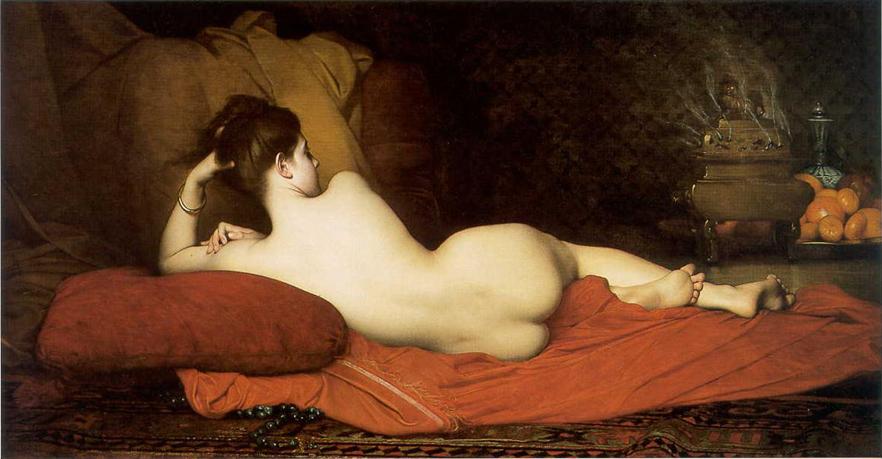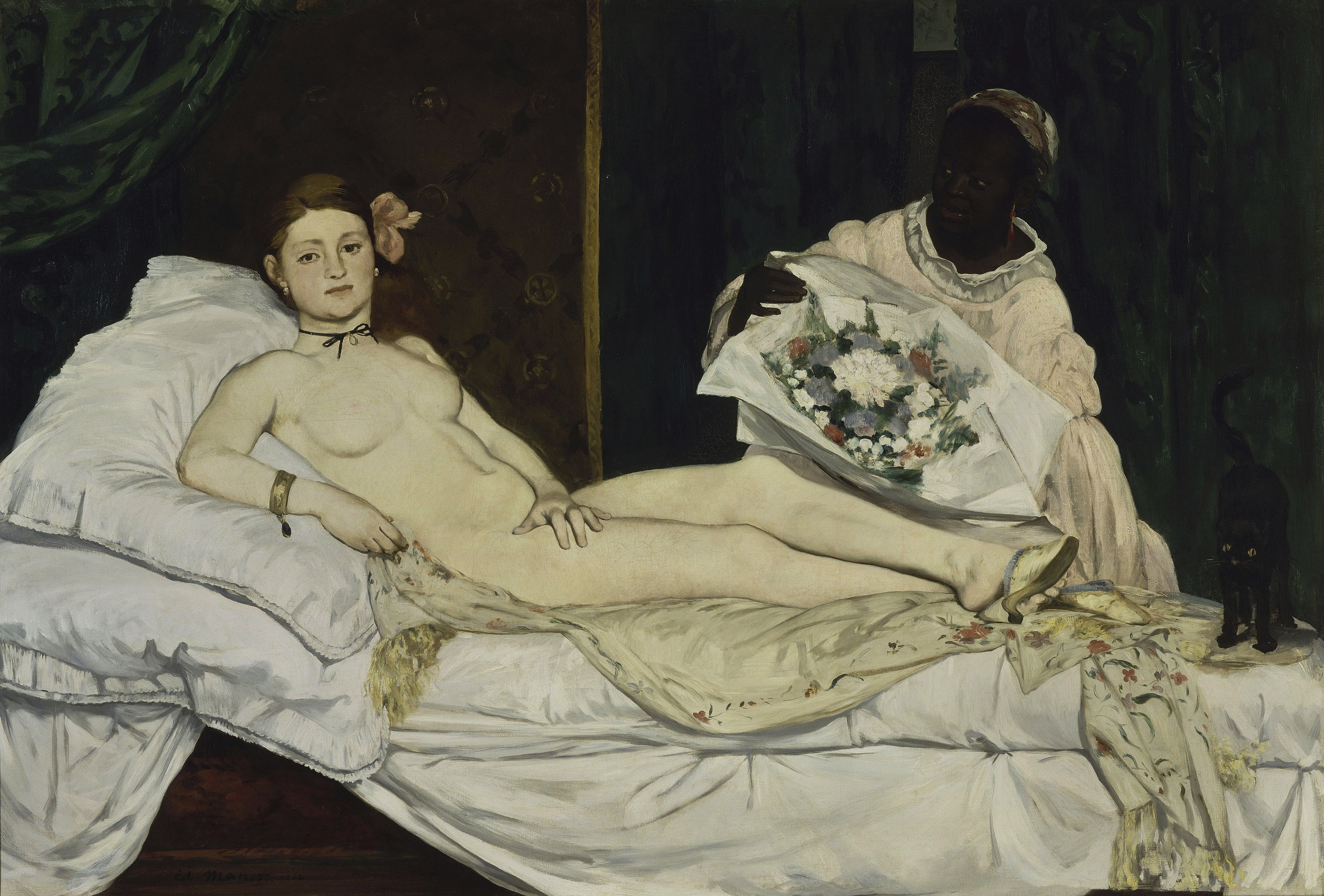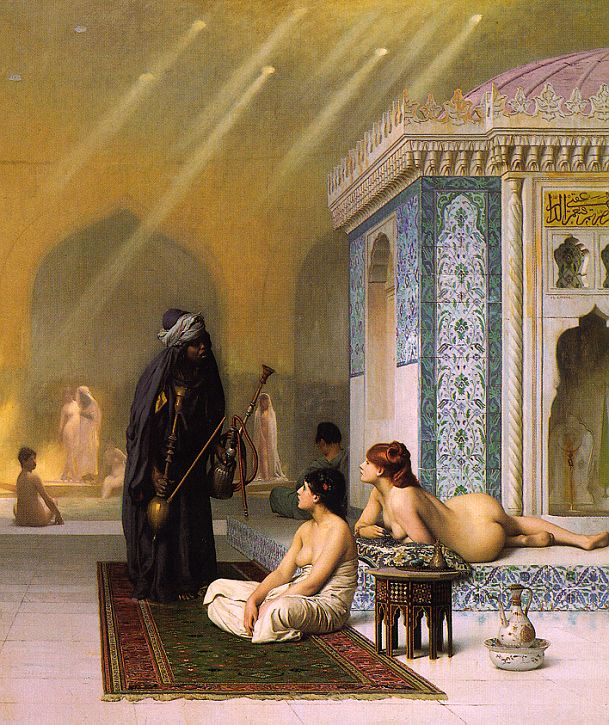Paintings of Odalisque and Prostitutes

Jules Joseph Lefebvre (French: [ʒyl ʒɔzɛf ləfɛːvʁ]) (14 March 1836 to 24 February 1911) was a French figure painter, educator and theorist.
[2017-02-22 Wikipedia Jules Joseph Lefebvre]

Édouard Manet (US /mæˈneɪ/ or UK /ˈmæneɪ/; French: [edwaʁ manɛ]; 23 January 1832 to 30 April 1883) was a French painter. He was one of the first 19th-century artists to paint modern life, and a pivotal figure in the transition from Realism to Impressionism.
[2017-02-22 Wikipedia Edouard Manet]
Quote from wikipedia:
What shocked contemporary audiences was not Olympia's nudity, nor the presence of her fully clothed maid, but her confrontational gaze and a number of details identifying her as a demi-mondaine or prostitute.[1] Some of the details that indicated Olympia as a prostitute include the orchid in her hair, her bracelet, pearl earrings and the oriental shawl on which she lies, symbols of wealth and sensuality. The black ribbon around her neck, in stark contrast with her pale flesh, and her cast-off slipper underline the voluptuous atmosphere. "Olympia" was a name associated with prostitutes in 1860s Paris.[2]
The painting is modelled after Titian's Venus of Urbino (1538).[3] Whereas the left hand of Titian's Venus is curled and appears to entice, Olympia's left hand appears to block, which has been interpreted as symbolic of her sexual independence from men and her role as a prostitute, granting or restricting access to her body in return for payment. Manet replaced the little dog (symbol of fidelity) in Titian's painting with a black cat, which traditionally symbolized prostitution. Olympia disdainfully ignores the flowers presented to her by her servant, probably a gift from a client. Some have suggested that she is looking in the direction of the door, as her client barges in unannounced.
The painting deviates from the academic canon in its style, characterized by broad, quick brushstrokes, studio lighting that eliminates mid-tones, large color surfaces and shallow depth. Unlike the smooth idealized nude of Alexandre Cabanel's La naissance de Vénus, also painted in 1863, Olympia is a real woman whose nakedness is emphasized by the harsh lighting.[1] The canvas alone is 51.4 x 74.8 inches, which is rather large for this genre-style painting. Most paintings that were this size depicted historical or mythological events, so the size of the work, among other factors, caused surprise. Finally, Olympia is fairly thin by the artistic standards of the time and her relatively undeveloped body is more girlish than womanly. Charles Baudelaire thought thinness more indecent than fatness.[4]
The model for Olympia, Victorine Meurent, became an accomplished painter in her own right.[5]
[2017-02-22 Wikipedia Olympia (Manet)]
[Wikipedia Olympia (painting)]

Jean-Léon Gérôme (11 May 1824 to 10 January 1904) was a French painter and sculptor in the style now known as academicism. The range of his oeuvre included historical painting, Greek mythology, Orientalism, portraits, and other subjects, bringing the academic painting tradition to an artistic climax. He is considered one of the most important painters from this academic period. He was also a teacher with a long list of students.
[2017-02-22 Wikipedia Jean-Léon Gérôme]